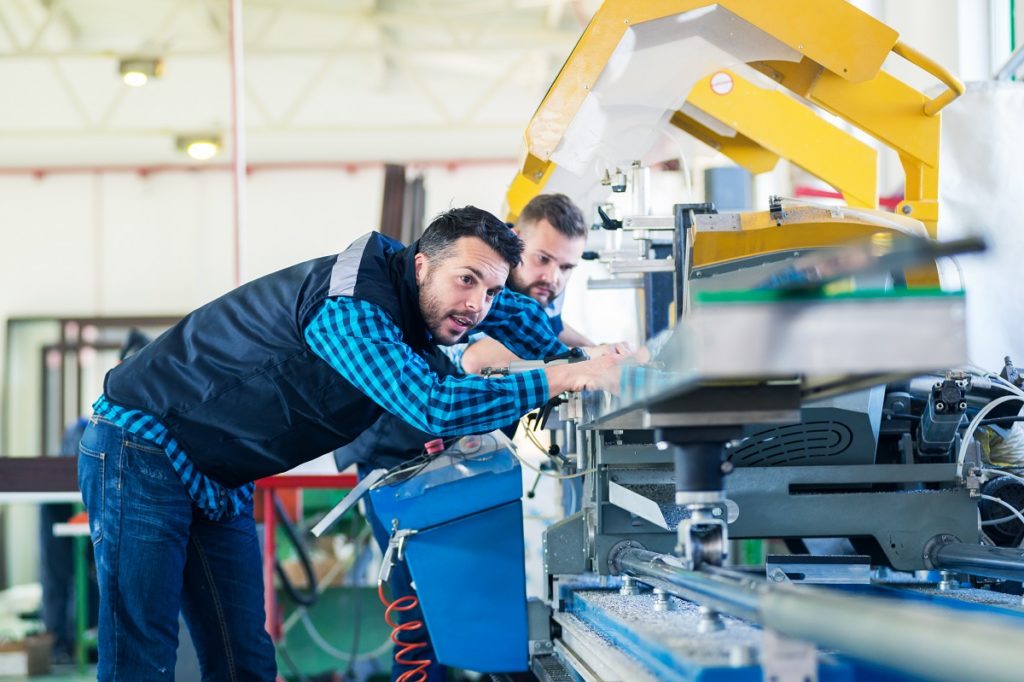Technological advances continue to revolutionize how almost every industry operates. As the fourth industrial revolution comes to a close, technological trends are gearing towards the fifth industrial revolution, paving the way for the collaboration of humans and machines.
It is worth noting that the manufacturing industry, just like other sectors, felt the drastic impact of the COVID-19 pandemic. The early days of the outbreak led to a decline in production and forced shutdowns costing thousands of employees their jobs.
April 2020 was recorded as the manufacturing sector’s lowest employment level since 20210. By December 2020, it was still lower than 543,00 than February of the same year.
But with the promising results of the vaccination rollouts early this year, employment rates might be looking up again for the manufacturing industry.
The lasting effect of the pandemic nonetheless accelerated advancements in manufacturing technology and digital connectivity.
Check out the latest trends in this industry in 2021 and beyond.
1. Employee Safety & Health Remains a Priority
For most of 2020, health and safety concerns have become the main topic of every conversation, from factory floors up to board rooms. And unless and until the COVID-19 pandemic dies down, this trend will continue for the foreseeable future.
Though workplace safety has always been the foremost priority of every manufacturing company, more attention will be given to it in light of the pandemic.
Besides enforcing basic safety precautions like social distancing and workplace sanitation, manufacturers are more likely to give much closer and more careful monitoring of individuals and equipment entering or exiting the company premises.
More and more manufacturing companies would opt for in-source facilities maintenance and management. More emphasis will be placed on traceability leading to greater transparency from suppliers.
2. Manufacturing Technology Gets Smarter
Artificial intelligence, robotic, and 3D printing are just some of the latest innovations in manufacturing technology. This year, it is expected that these technologies will become more sophisticated.
With declining costs and increased capabilities for robots, every factory floor will gradually be filled with this handy technology. Based on the International Federation of Robotics’ recent data, about 2.7 million industrial robots are currently operating worldwide.
Digital twin technology is also predicted to grow by 17 percent this year. Digital twin tech makes the whole production process much faster, easier, and at a reduced cost. This latest technology trend has proven to be useful in producing computer or machine parts and fine art reproduction.
3. IoT Is Still Huge
Though the Internet of Things (IoT) has become more common and widespread in recent years, it continues to be on the list of top trends when it comes to adaptability and innovation.
The Internet of Things, which encompasses various devices’ interconnectivity through existing internet infrastructure, has helped manufacturing companies make strategic and informed decisions. The real-time data offered by the IoT enables cost reduction, improves safety, and boosts production efficiency.
A recent study showed that about 31 percent of production processes now incorporate IoT technology into their processes.

4. Environmental Sustainability Is on Top of the Agenda
54 percent of the global energy consumption and 20 percent of global emissions today come from the manufacturing industry.
With the growing concerns for environmental sustainability from enterprises and consumers alike, it is no surprise that companies are making efforts to go green.
Because of this, circular manufacturing is becoming a rising trend. This includes:
Repurposing resources and materials
Swapping from renewable energy to power factories
According to a recent survey, half of the respondents agree that over 60 percent of construction projects would switch to sustainable options by 2021. With the fast-growing demand for green building materials, the market is expected to grow by $425 by 2027.
5. ERP Is a Mainstay
Enterprise resource planning (ERP) systems, which refers to providing an integrated suite of business applications, have become a cornerstone to manufacturing companies. It is mainly due to their ability to provide accurate, real-time information and streamline processes through automation.
Rather than make a complete overhaul of their existing ERP systems, manufacturing companies opt to build around their existing data models. This helps save valuable time in the whole process.
6. Touchless Service Models
Though the coronavirus pandemic was a major obstacle for manufacturing companies, assistive technology like virtual reality (VR) and augmented reality (AR) makes it possible to provide remote assistance.
VR- and AR-enabled devices allow technicians to walk through customers in doing basic repairs and troubleshooting. As this solution provides convenience and ease for both customers and technicians, it is likely to stay and improve.
With newer challenges being faced each year, digital transformation in the manufacturing industry will not slow down soon but will only accelerate faster.





